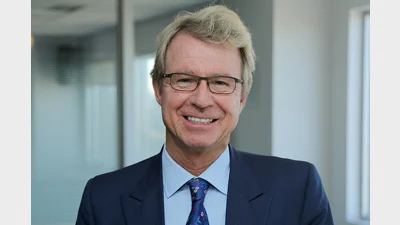Hedging your bets on recovery


While there are signs that markets are likely to continue their improvement in 2013, Damon Taylor writes that there is enough doubt still in the minds of investors to justify maintaining their allocations towards fixed income.
As the world’s financial markets ease into 2013, the consensus seems to be that they are in a markedly better place.
The calamity of a financial system breakdown has been avoided and yet according to Roger Bridges, head of fixed income for Tyndall, that does not mean that fixed income returns are suffering.
Yes, market volatility has created an environment in which they could prosper, but for Bridges this is a long-term cycle and one in which fixed income performance could well endure.
“Obviously, fixed income has been averaging pretty high returns over the last few years, largely because of what’s happening around the world,” he said. “So over the last five years, its been anywhere between 6 and 7 per cent.
“The big question though is what happens going forward,” Bridges continued.
“And obviously everyone’s talking about bond bubbles and other things and getting very worried, but what we have to remember is that over the last 20 years, fixed income has only actually produced a negative return twice.
“The worst one was 1994 when it was 5 per cent and the last one in 1999 was around 1 per cent, but over the last 10 years, it hasn’t done a negative return at all.”
In equities, on the other hand, Bridges was quick to point out that the last 10 years had clearly been a far bumpier ride.
“So not only is a negative return more likely to happen, it’s also the fact that the severity of that negative is likely to be a lot worse,” he said.
“And yes, I do believe that we’re probably coming up to a negative return in bonds and, whatever happens, rates are probably going up at the end of this year or next - but the fact remains that they do offset that equities market risk.
“And I think that’s the major thing for fixed income - you shouldn’t see it necessarily as an income-producing game, which obviously it can be, because at the same time, it’s always going to reduce that risk around equities.”
Commenting on the state of play for domestic markets more specifically, Mark Paton, CEO of FIIG Securities, said that much was dictated by longer-term expectations about low cash rates.
“As a consequence, the cash that’s moved out of other asset classes since the GFC (global financial crisis) is potentially coming under a bit of pressure to move back into higher yielding investments,” he said.
“In part, that pressure is seeking fixed income assets, so we’re seeing a bit of demand uplift there, but at the same time credit spreads have contracted from post-GFC highs.
“You’re therefore getting selling activity where people are seeing a bit of premium for their fixed income investments and they’ve taken it,” Paton continued. “But generally speaking that cash is looking for the next investment to go into.
“And although it’s still volatile, we’re definitely seeing a bit of movement back into equities markets as a result.”
Globally, Paton said that while the Eurozone was still volatile, that environment’s movements had become less sudden and unpredictable.
“In other words, I think people would now think that the Euro will work itself out,” he said.
“There’s been a realisation that this may well be a decade-long cycle so while its unlikely to collapse, its unlikely to fix itself anytime soon either.
“In the case of the US, I think there’s a bit of political will to fix some of the longer-term structural issues present in that market and that’s served to keep deferring things out,” he said.
“So whilst I think the world saw a lot of volatility around it, and whilst that does impact the domestic situation closer to home, the world seems to have worked out how to live in uncertainty and without conclusion on a lot of things.
“No matter how you look at it, I think we’re in for a long cycle in this sort of environment.”
So for Bridges, while a bond bubble is indeed possible, it will not necessarily take place in the short term.
“It’s simply more likely as time progresses,” he said.
“Obviously, the central banks around the world are artificially keeping rates down with their quantitative easings, so I think the most important thing is how unemployment falls in the US and how the Fed Reserve goes about reversing its current policy.
“Now obviously, the Fed Reserve wants to keep rates down and yes, one could be very sceptical and say they won’t be able to do it,” Bridges continued.
“But, at the same time, even when they start reducing quantitative easing, they can’t really allow the bond market to totally collapse because that will have knock-on effects for the recovery.”
The more likely scenario, according to Bridges, is that the Federal Reserve will look to control the situation by taking policy on and off to allow rates to go up gradually.
“That will obviously lessen the losses to investors and the great thing about bonds is that they do mature and time is a great healer,” he said.
“So you could buy a bond today, you’d get your money back and it will only ever be a mark to market loss that will eventually become money returned anyway.”
Yet irrespective of how fixed income has performed to date, or indeed how it will perform into the foreseeable future, there are continued concerns that its value is underestimated.
The reality is that the demographics of Australian superannuation demands its greater use and yet for John Wilson, head of PIMCO Australia, the penny has not yet dropped.
“Bonds are without doubt the most under-owned asset class in Australia,” he said. “And I’ll give you an example - I’m up at the IFAA (Independent Fund Administrators & Advisers) Conference at Noosa sometime late last year and a question comes from the floor.
“‘Aren’t you really concerned about the level of bond yields? Shouldn’t we be reducing our bond exposures?’” Wilson explained. “And I look at this guy and say ‘why would you be reducing your bond exposures? You don’t own any as it is.’”
Like it or not, Wilson said that the current status quo had super fund fixed income allocations sitting somewhere between 10 and 15 per cent - and that only on the basis of the diversification benefits the asset class could provide.
“It strikes me though, as we go into a period where increasingly superannuation funds will represent members in retirement as opposed to members in accumulation, that those that have a significant retiree population, or have a significant group of members that are at or near retirement, will require greater capital stability and income versus capital growth potential,” he said.
“So as the system matures, and it’s happened much more rapidly than people might have anticipated, the demand for capital stability and recurring income will indeed increase, which means that people are going to have to own more bonds.
“But you know what? I said this five years ago at the ASFA (Association of Superannuation Funds of Australia) Conference and, as yet, we’re not seeing any strong switch from equities to fixed interest in the institutional channel,” he said.
“And that’s a huge contrast with the more retail-oriented channels where we are seeing an almighty switch.
“So go back five years at PIMCO and we were lucky to do $300,000 a day out of financial planners, private wealth managers, private banks whereas today, we do $5 million-plus a day out of those flows.”
Also offering the retail investor perspective, Paton said that for the most part, asset allocations had been built against the backdrop of a long equities boom cycle.
“So a typical allocation has 70 per cent in equities and 30 per cent cash, I think that’s the historic view,” he said.
“But I think as the funds management industry continues to work through the cycles, as the pain from post-GFC gets felt in client demand, as the population dynamic changes, as baby boomers start come near to retirement or enter the post-retirement phase, the picture has to change.”
“As all of these forces are brought to bear, it will cause asset allocators and professional fund managers to take a more balanced approach to portfolio allocation,” Paton explained.
“And obviously, as a fixed income manager, I’m biased but I guess that means more wealth protection and again, in a lower yield environment where there’s a greater demand for income, it means that allocations to fixed income type products is likely to increase.
“And you’re certainly seeing that trend in the managed fund end of the market now.”
According to Paton, self-managed super funds (SMSFs) provide the perfect example.
“So when you look at self-managed super funds and when you look at the adviser network and the planner network that advises those self-managed super funds, I think they’re following that trend,” he said.
“When people put their money into a managed fund, let’s call it the professionally advised end of market, they’re expecting a balanced allocation based on the investment intentions of the investor.
“If the investor’s in an accumulation phase, then there’s going to be a bias towards capital growth and if they’re in a wealth protection phase, either pre-retirement or post-retirement, they’ll be looking for more wealth protection allocation, particularly in a low interest and low yield environment,” Paton continued.
“They’ll be looking for an orientation to more income; and in traditional markets, in your equity allocation, that means putting more into hybrid equities and higher-yielding equities.
“But I think for a balanced portfolio allocation, an allocation to true fixed income investments is not only likely to increase - it has to increase.”
Indeed, it seems clear that when it comes to increasing fixed income investment, retail flows are providing the lead. And yet for Wilson, it is Australia’s high net worth investors specifically who have become so critical.
“So there are two views about retail investors; the first is that they chase returns and, in a sense, part of the interest in fixed interest securities in the last little while might be people chasing returns,” he said.
“But the first movers in this space are typically people who are of higher than average net worth.”
“So say you’re someone with $10 million, you simply don’t need to push the portfolio as hard as someone who’s got $1 million in retirement,” Wilson added.
“So that person with $10 million typically has about 40 per cent in cash and fixed interest and they’ll tip us $2 million, $3 million, $4 million because their objectives are a little bit different.
“They might have 40 per cent of the portfolio returning 6 or 7 per cent per annum, meaning 3 per cent real over time - but the bottom line is that they’re in the business both of capital growth and capital preservation.”
And for Wilson, the story for super funds need not be all that different.
“I think that super funds should be looking at this in a much more creative way,” he said.
“And we are in very heavy dialogue with people about how it is that you ought to configure a fixed interest portfolio to meet the needs of different sorts of member cohorts.
“So if you’ve got accumulation members and you’re looking for alpha, then maybe what you want to be thinking about is global strategy that might have a bias towards the emerging markets because the returns there, particularly in local currency terms, are still quite attractive,” Wilson explained.
“So you’re looking for capital growth and income in the portfolio and it forms part of a more growth-oriented strategy, notwithstanding that fact that it’s a defensive asset class.
“And then over on the retiree side, what you’re really looking for is capital stability and recurring income, but the point here is that you manage your fixed income portfolio differently depending on your customer cohort.”
Yet if super fund allocations to the asset class are one side of the fixed income story, then Australia’s corporate bond market is the other. It was already a topic of conversation in industry forums throughout 2012, but Paton said that discussions had so far yielded a proposed framework only.
“This debate’s been going on for some time and that includes legislation - I wouldn’t call it proposed or drafted - but there’s a framework of legislation which has been put around for the purposes of stimulating a debate,” he said.
“So today, if you go back to basics, the corporate bond market in terms of what’s on issuance has 90-plus corporate bonds that are available for investors outside the Commonwealth bond market.
“There are public listed corporations, big institutions, financial institutions, big companies who have a credit rating and they’re very actively traded, particularly by wholesale investors, superannuation funds etc,” Paton continued.
“So the sorts of issuers I’m talking about are the big banks, Wesfarmers, Coles, BHP and those sorts of business - the top end corporate names in Australia.
“It’s a very deep market in terms of volume and very widely traded in the professional markets.”
But the issue, according to Wilson, is not depth in terms of issuers but depth in terms of domestic appetites for investment.
“Essentially, the issue about the appetite for domestic fixed interest versus the appetite for domestic equities is that if you’ve got a superannuation system that only has 10 to 15 per cent exposure to fixed interest, there’s not a lot of embedded buyer demand for Aussie paper,” he said.
“There’s just not the same sort of buyer base that you’ve got for Aussie equities.
“Now my own personal view is that over time, most of the very large superannuation funds that get to $40 billion in size, and you see this with some of them already, where if Company X is doing an inflation-linked bond issue or a nominal bond issue, it may be that they’re talking to a superannuation fund or an insurance company direct,” Wilson continued.
“They’re making an evaluation of that credit, making an evaluation of where it fits in their portfolio and they’re buying it direct rather than relying on an investment manager.
“And you can conceive of an environment where as these funds merge and get larger, they’ll have the capacity to in-house some of that sort of activity and that, in and of itself, might widen the potential buyer base for domestic credit securities.”
However, Wilson said that the other challenge for domestic issuers lay in the power of global reach.
“If you’re a BBB issuer in Australia, you’re competing against every other BBB issuer in the world in terms of the way we think about things at PIMCO,” he said.
“So the question is, are we going to buy company A in Australia or company B in Germany, Spain, France, Italy, the United States, wherever, and hedge that back into Aussie dollars?
“And if we can buy that company at a more attractive price in a foreign market and get a higher return for our domestic customer on an Aussie dollar hedge basis, we’ll do that,” Wilson outlined.
“Similarly, if you’ve got Australian issuers issuing in dollars, yen, US dollars or Euro, we’d say, well, where can we buy it cheapest and where can we get the highest return for our customer?
“So there will always be international managers like us with research scale who just don’t have to be in this market.”
Of course, if anything can blunt the kind of temptation pointed to by Wilson, it is the tax effectiveness of local bond investment and for Bridges, moves to that effect are vital.
“At the moment, I think the tax situation defeats the purpose of bonds in the sense that you pay tax on coupons,” he said.
“So say you buy what we would call a premium bond; most bonds today are premium because rates have rallied so high that the coupon’s a lot higher.
“But what that means is that I’ll pay tax on quite a high coupon even though I’m paying say 115 for it, and that’s whether or not I get 100 back in 10 years time,” Bridges continued.
“I can only claim back the tax on that extra 15 in 10 years time.
“So I think the tax system actually goes some way towards defeating the whole purpose of the corporate bond market and that really tilts the whole thing to equities yet again.”
So what then does the future hold for fixed income? It seems clear that the changing demographics of super funds will continue to highlight the asset class’s importance but for Paton, it all comes down to investor demand.
“This is all about voices,” he said. “How do you develop a market that’s undeveloped? How do you get more access to bond markets or corporates?”
“There’s got to be a demand for it,” Paton stated.
“So investors, whether super funds members or retail investors in their own right, have got to lift their voice and be more demanding about what’s got to change for that to occur.”
And according to Wilson, there are already signs that those voices are being heard.
“There are early signs that it’s emerging and it’s emerging most notably with those superannuation funds that have a large body of members who are at or near retirement,” he said.
“In fact, anyone who’s got a pretty mature fund has got this same problem and so most people are running around trying to solve it.
“So yes, fixed interest allocations are at an all-time low at the moment but from here, I think you’ll see them gradually move back up.”
Yet instead of predicting that fixed income allocations would increase broadly, Wilson said that it was far more likely that they would move up according to specific product strategies.
“So if you look at any super fund, they’ve got a suite of offerings - they’ve got capital stable, secured, balanced, growth and aggressive growth,” he said.
“But what I think will happen is that members will seek greater capital security and super funds will see more flow into those investment options that have a greater weighting to more defensively oriented assets.
“And that will inevitably mean more fixed interest in the system - it’s people recognising that they’re now 65, they’re funding another 25 years of life, they’ve got to make sure that they de-risk the portfolio.”
Recommended for you
Investors have slashed their US equity allocations to the lowest level on record, according to new data from Bank of America.
The message from experts in international trade and economists is that the Australian government should refrain from retaliating with reciprocal tariffs.
The market correction forecast by AMP’s chief economist is in full swing, with three weeks of turbulence culminating in significant losses on Tuesday.
Following a strong risk appetite in January, institutional investors have pulled back in February, with risk-seeking activity dropping to zero amid a decline in equity allocations.













